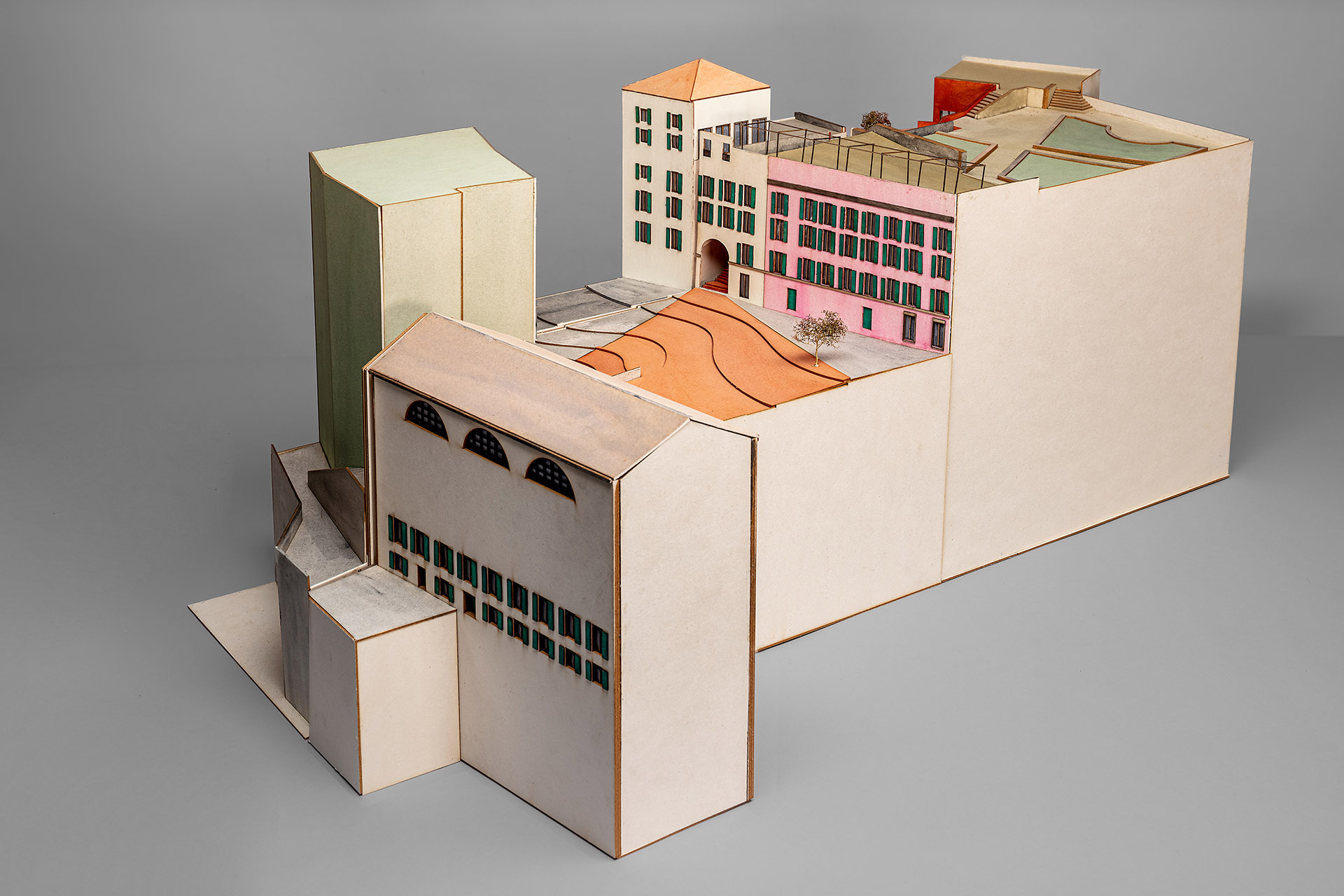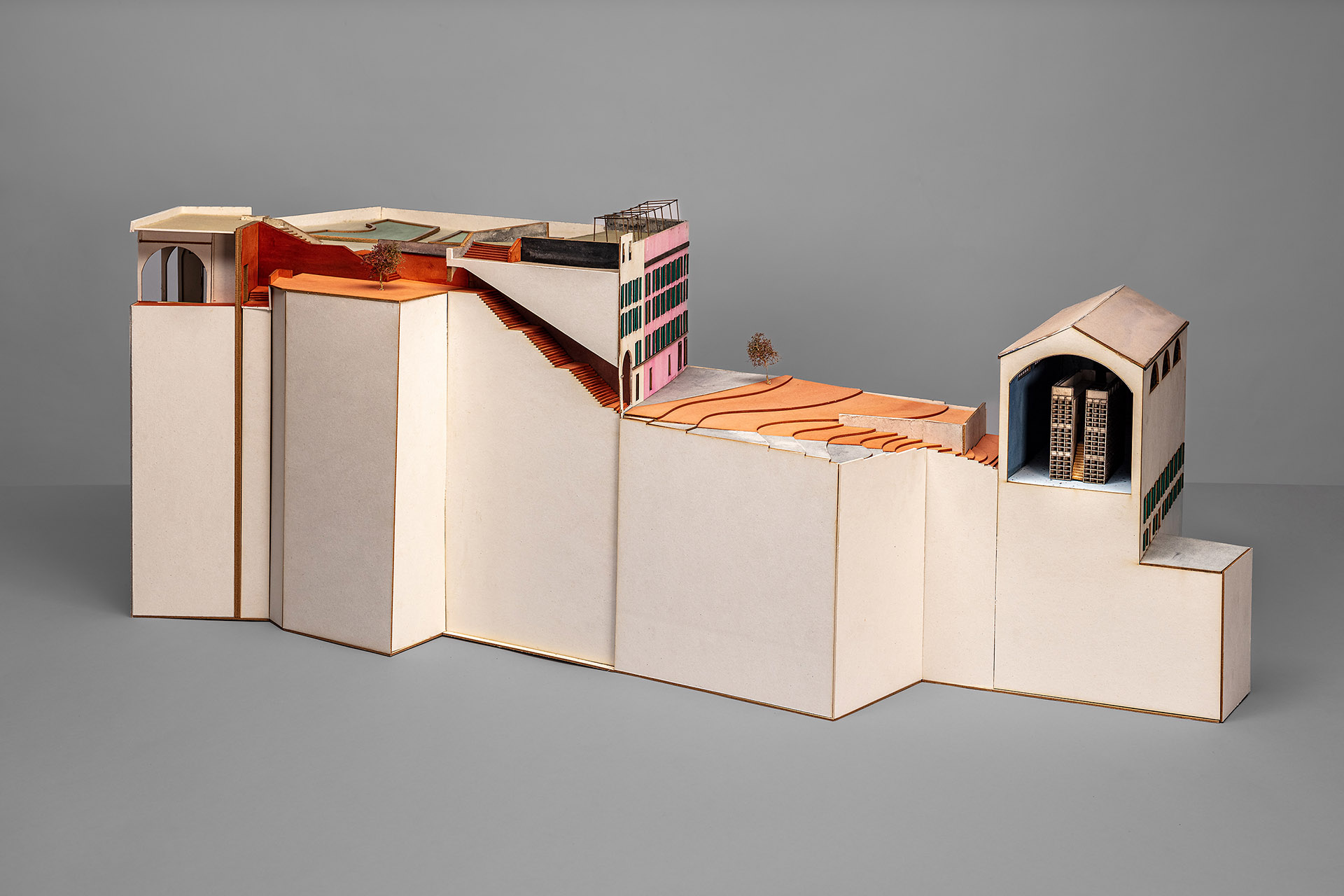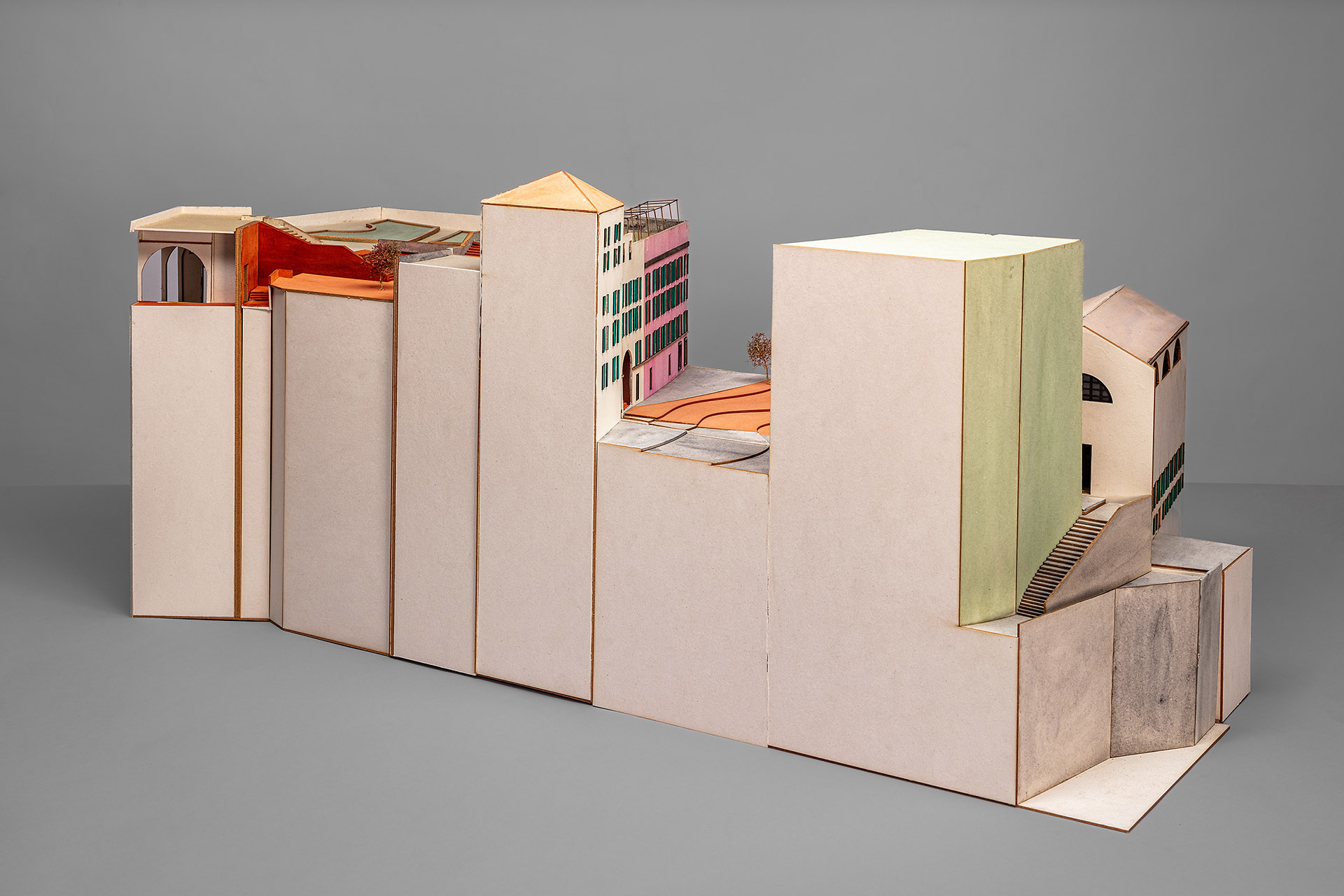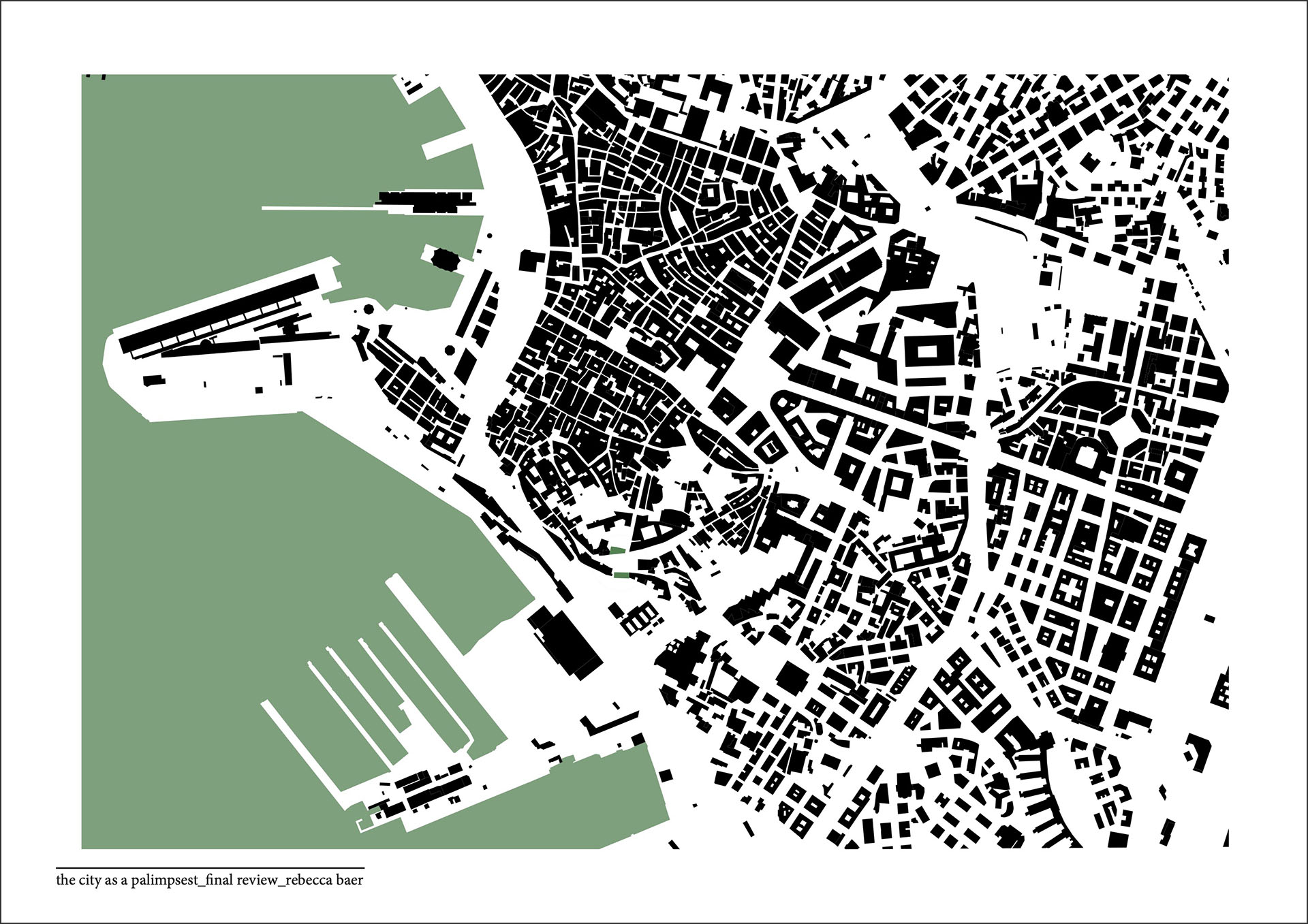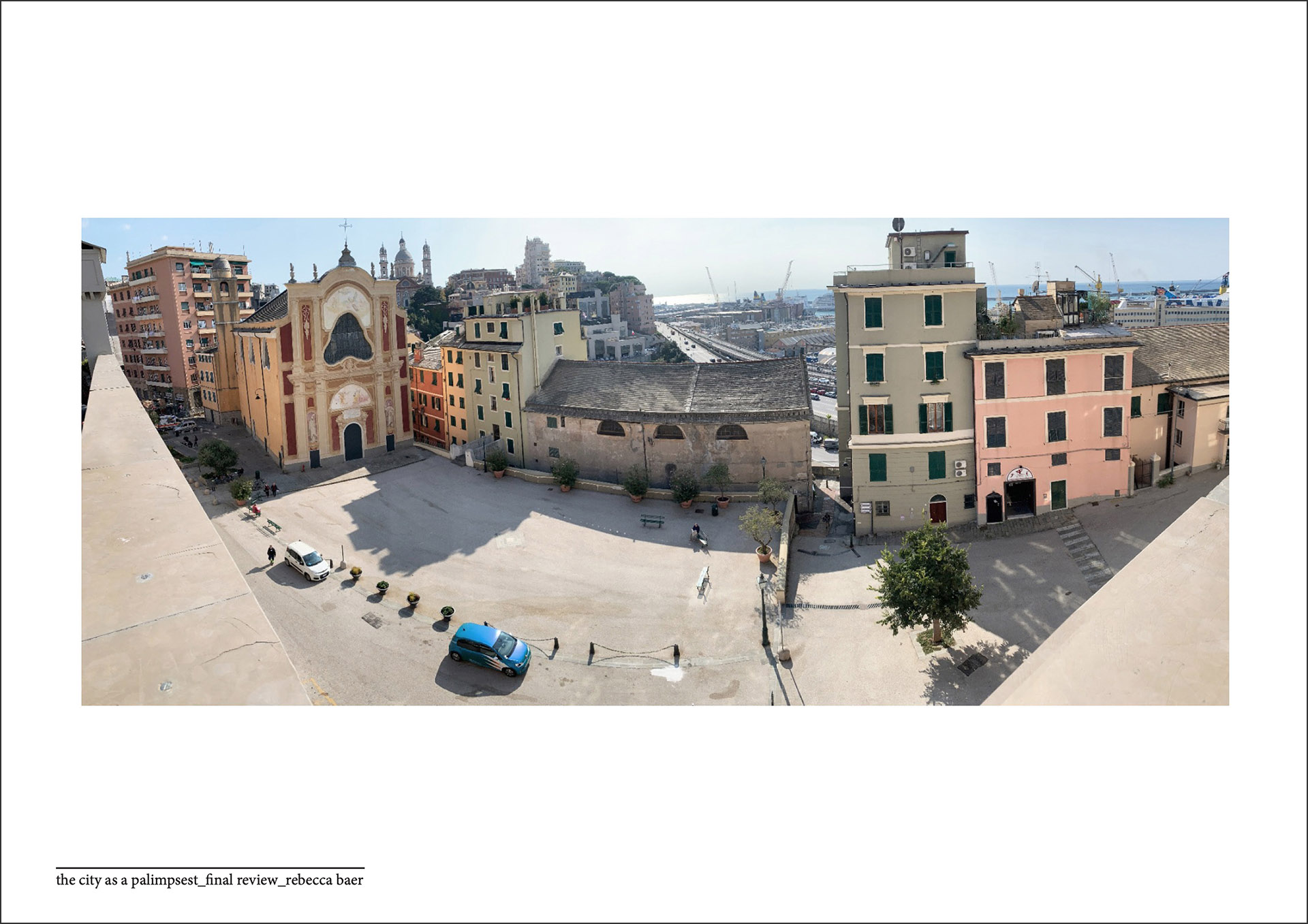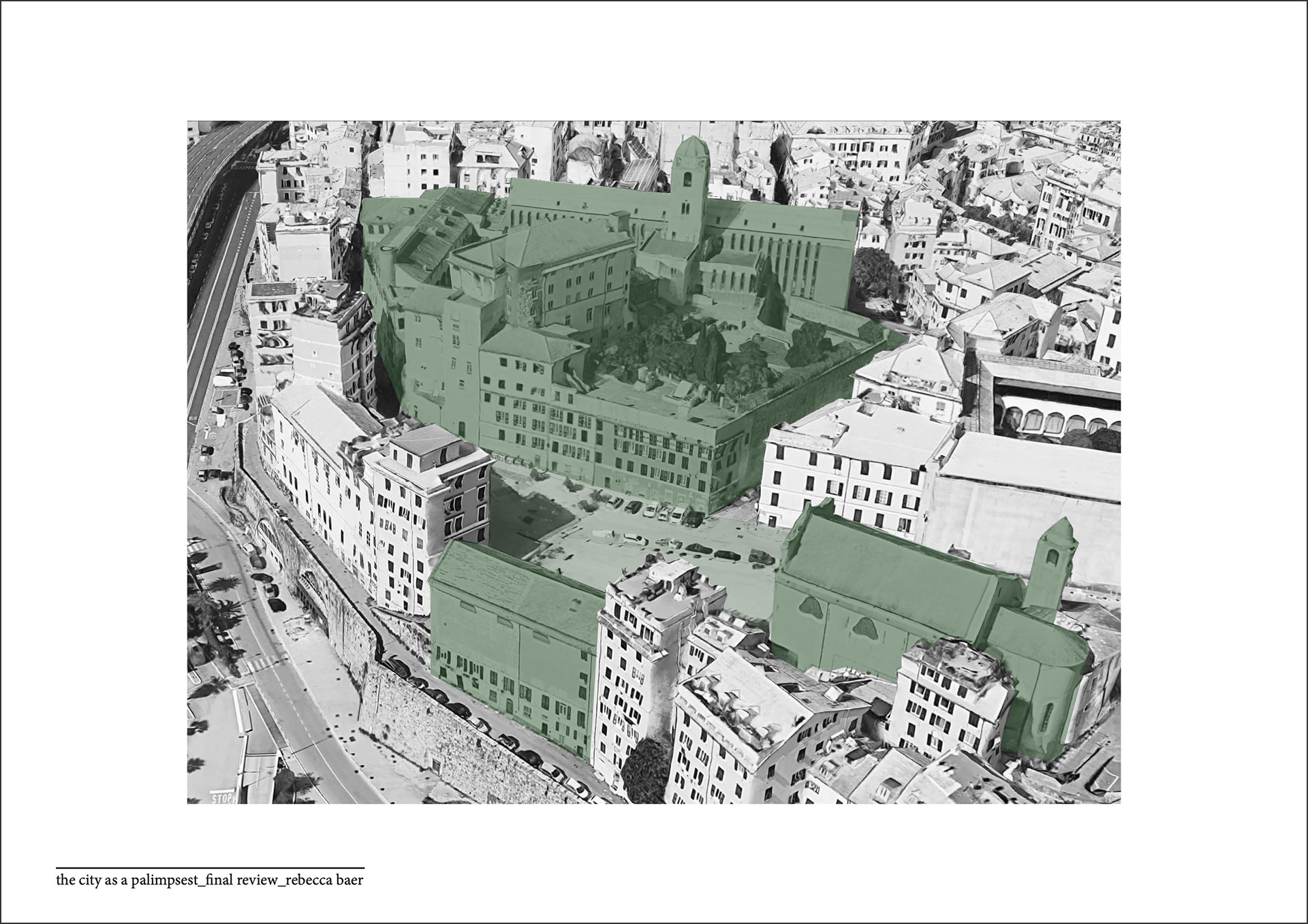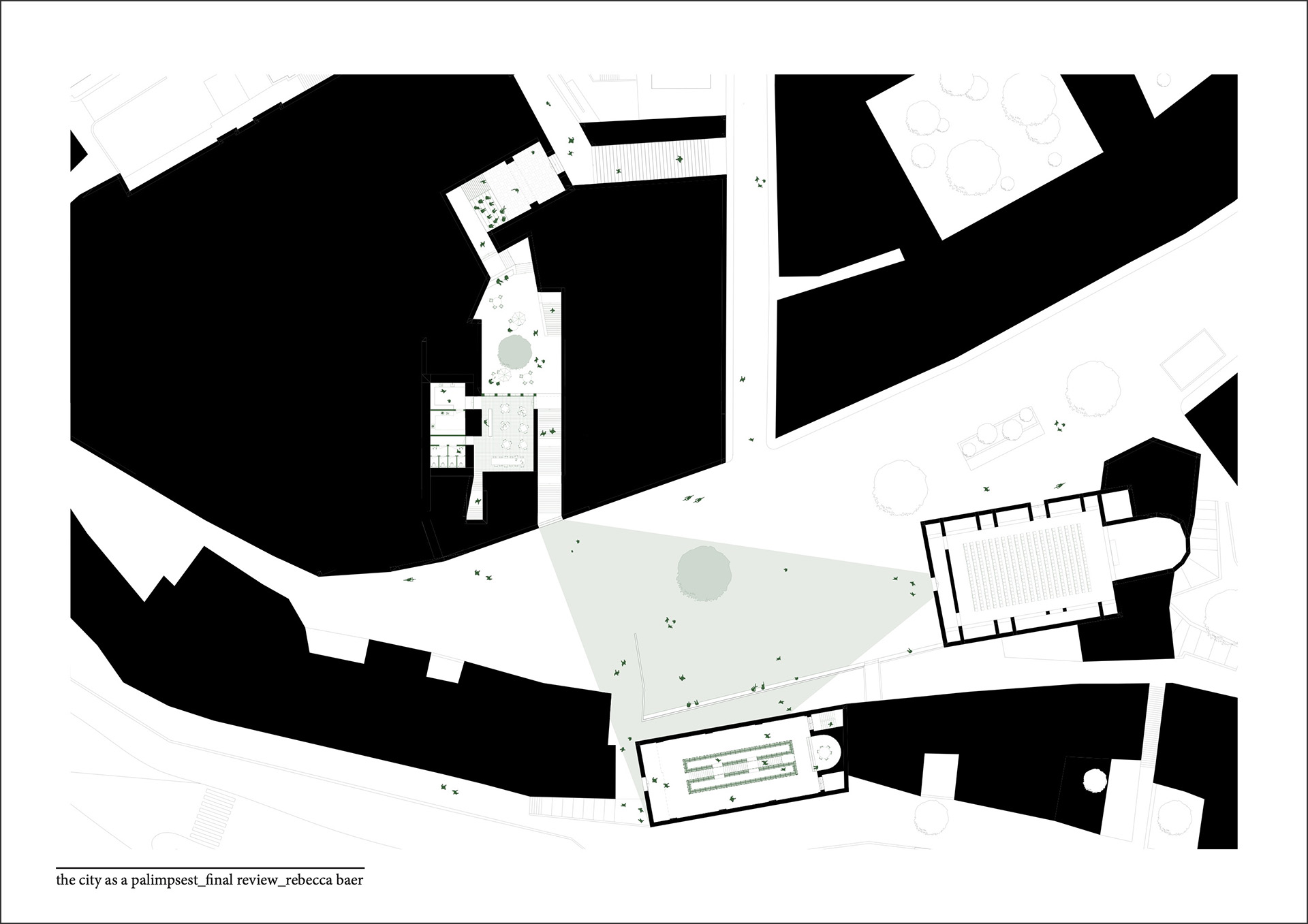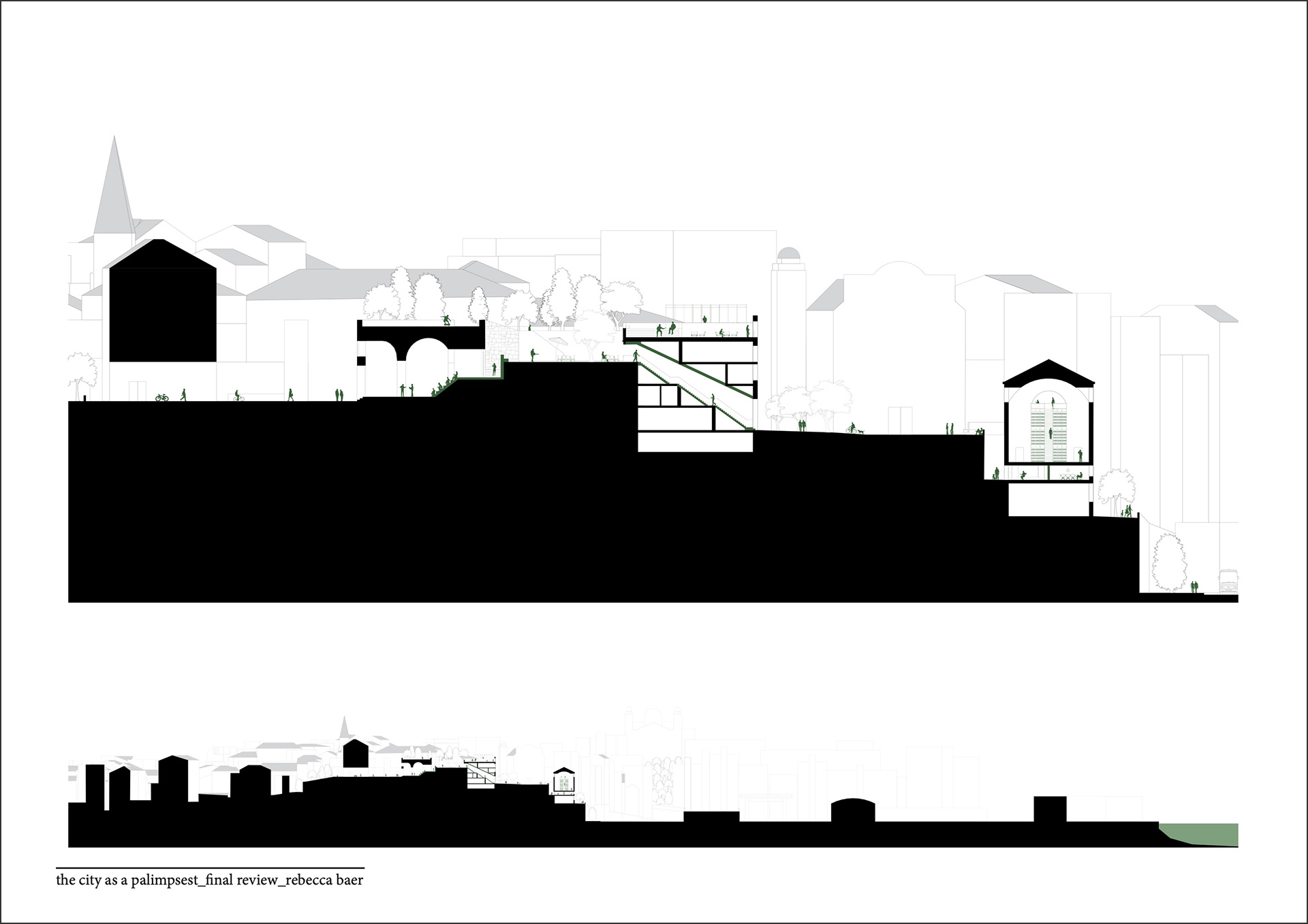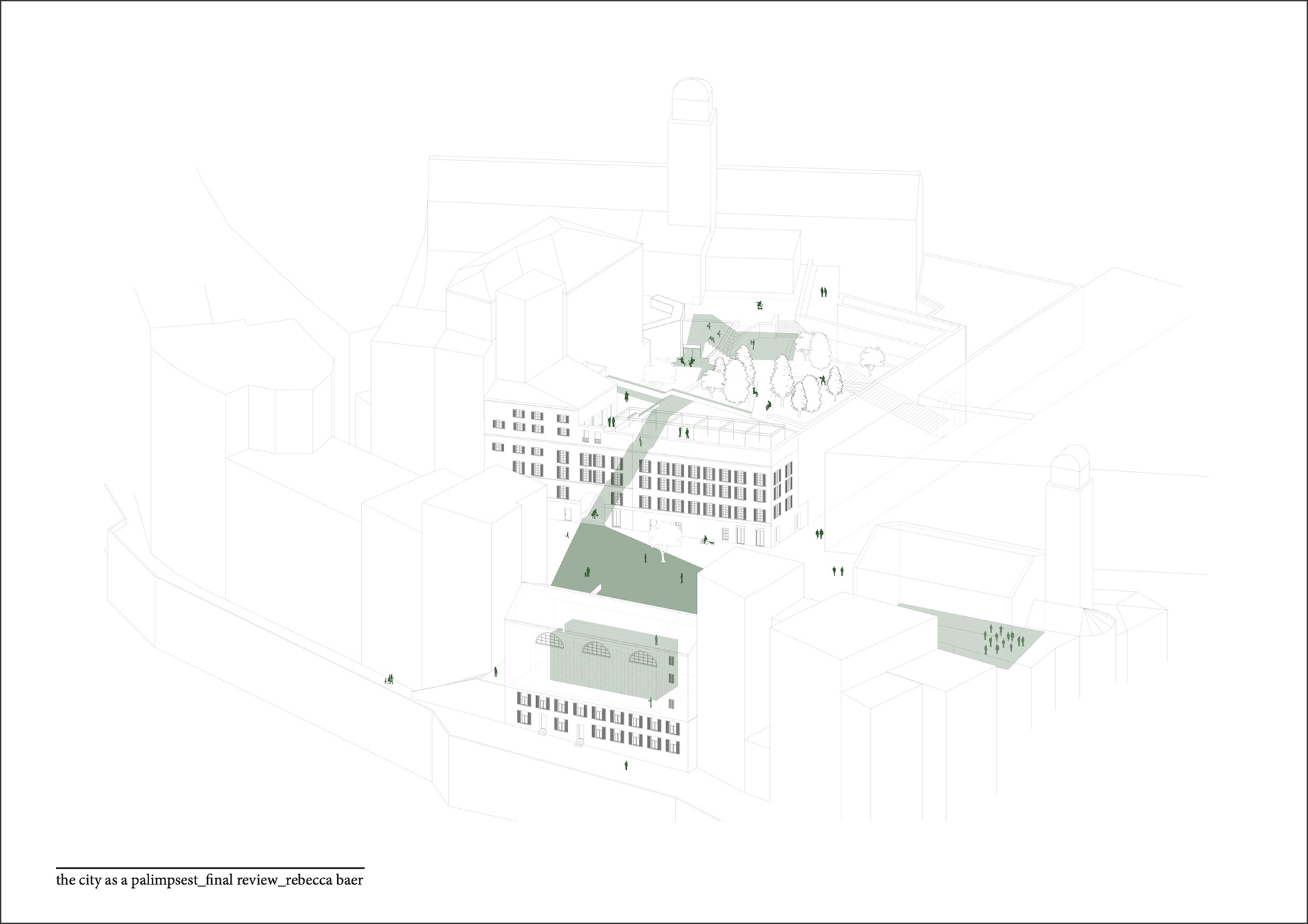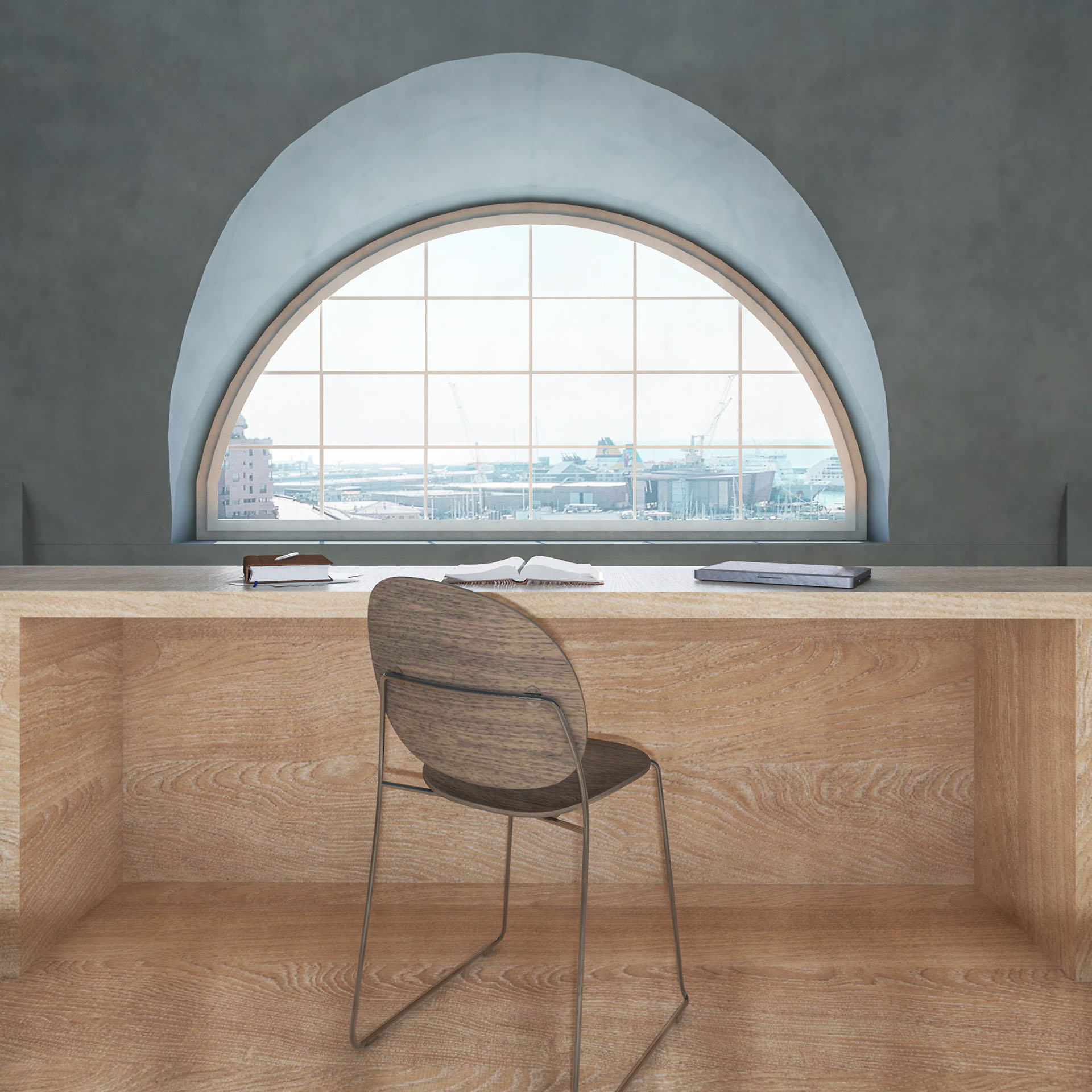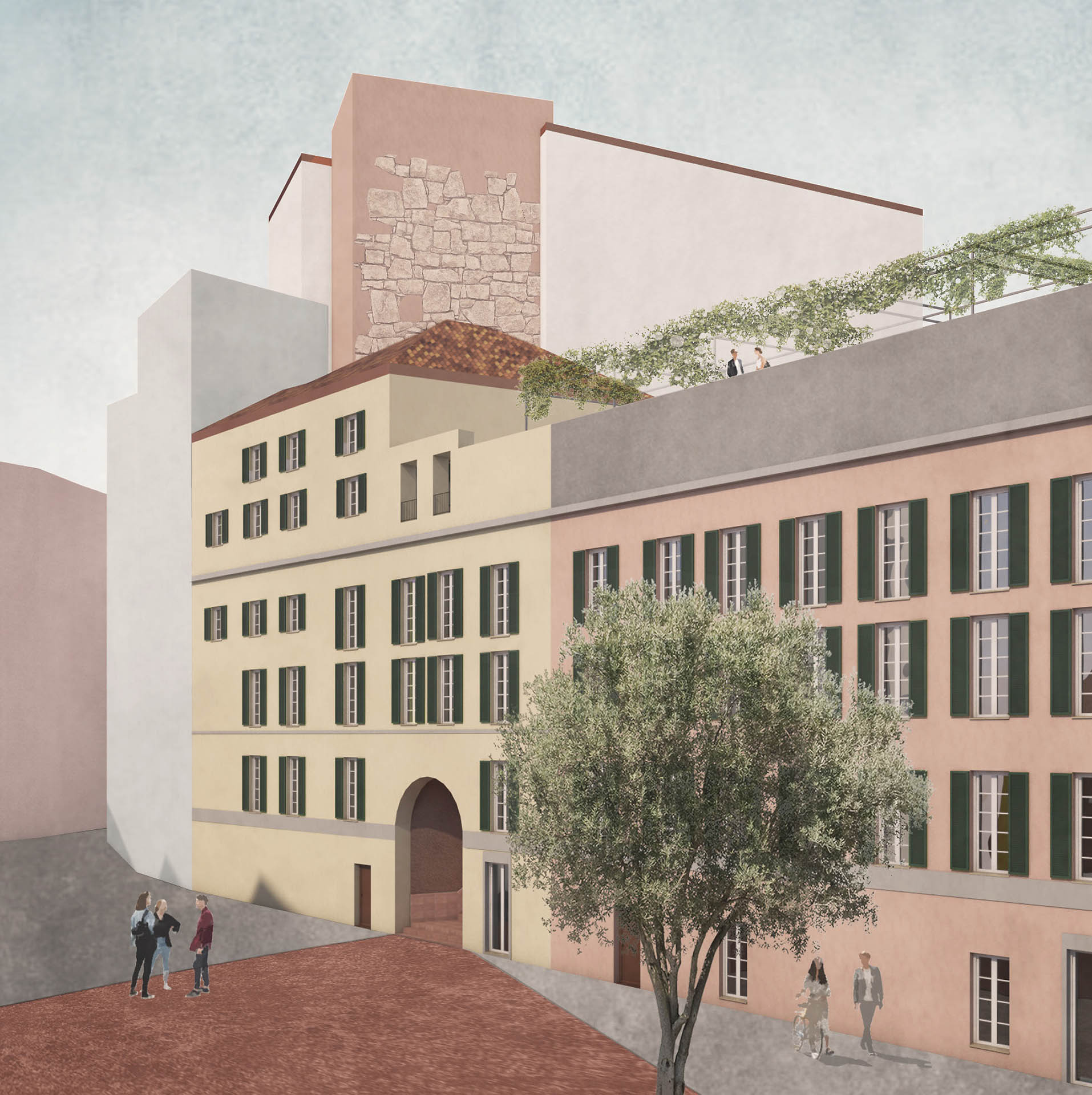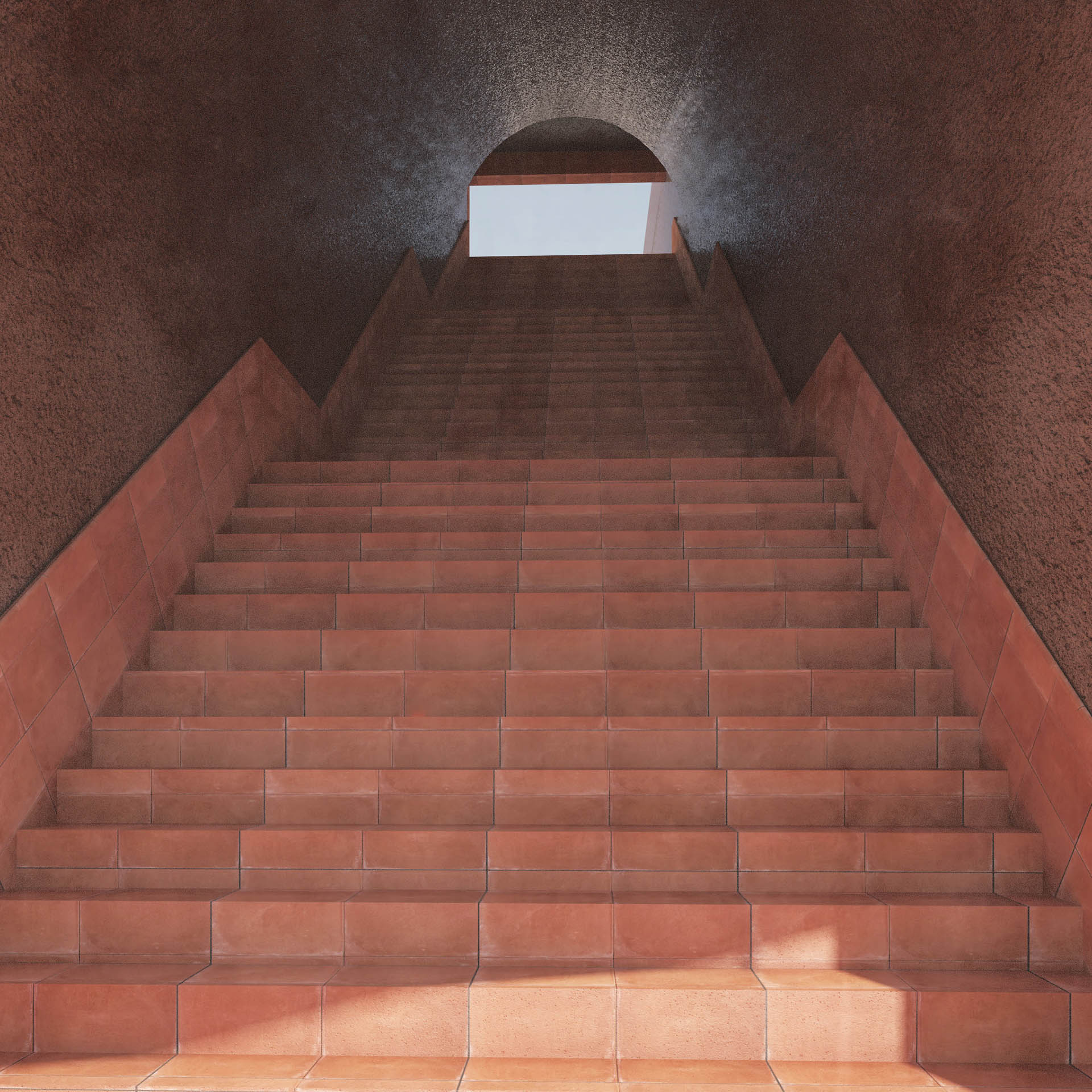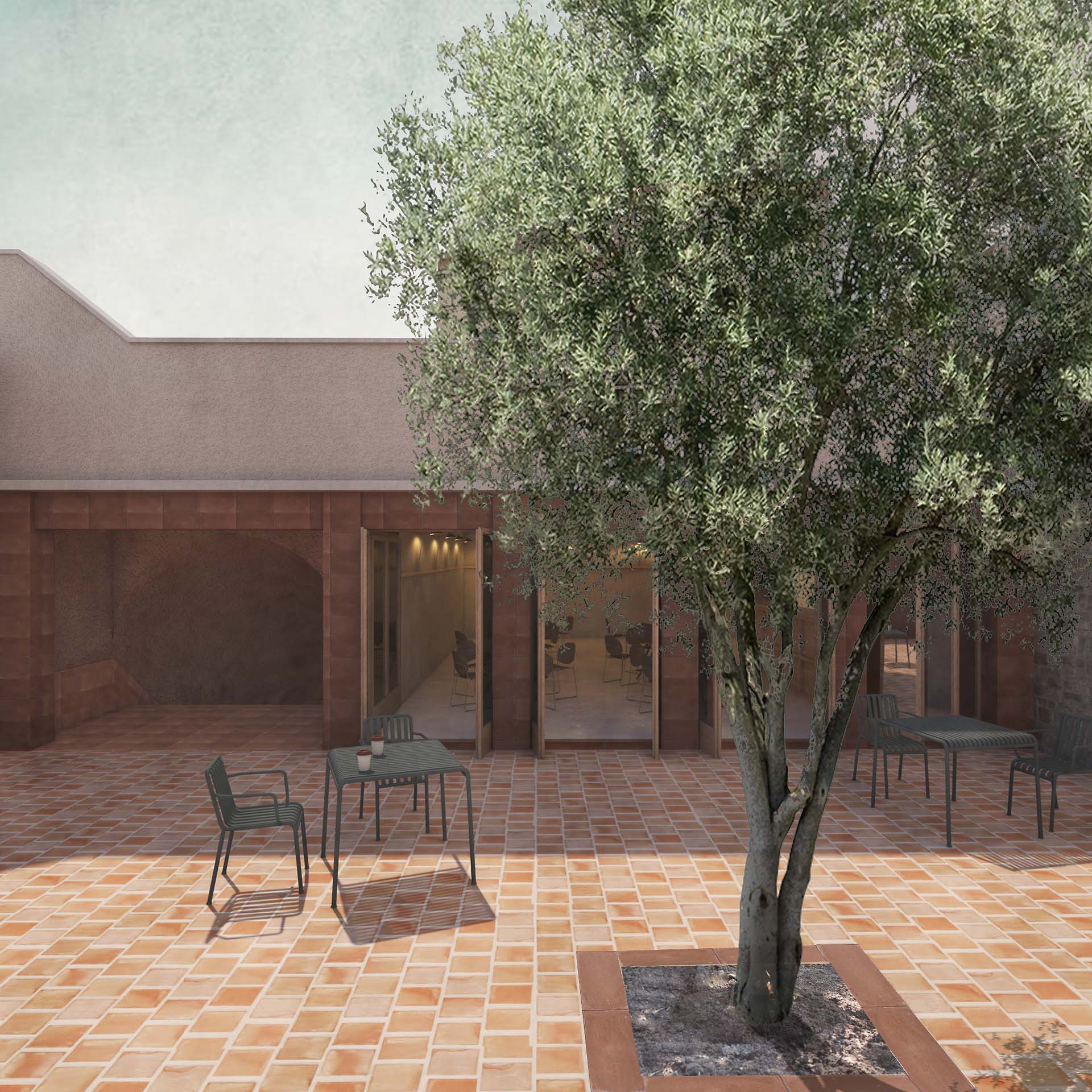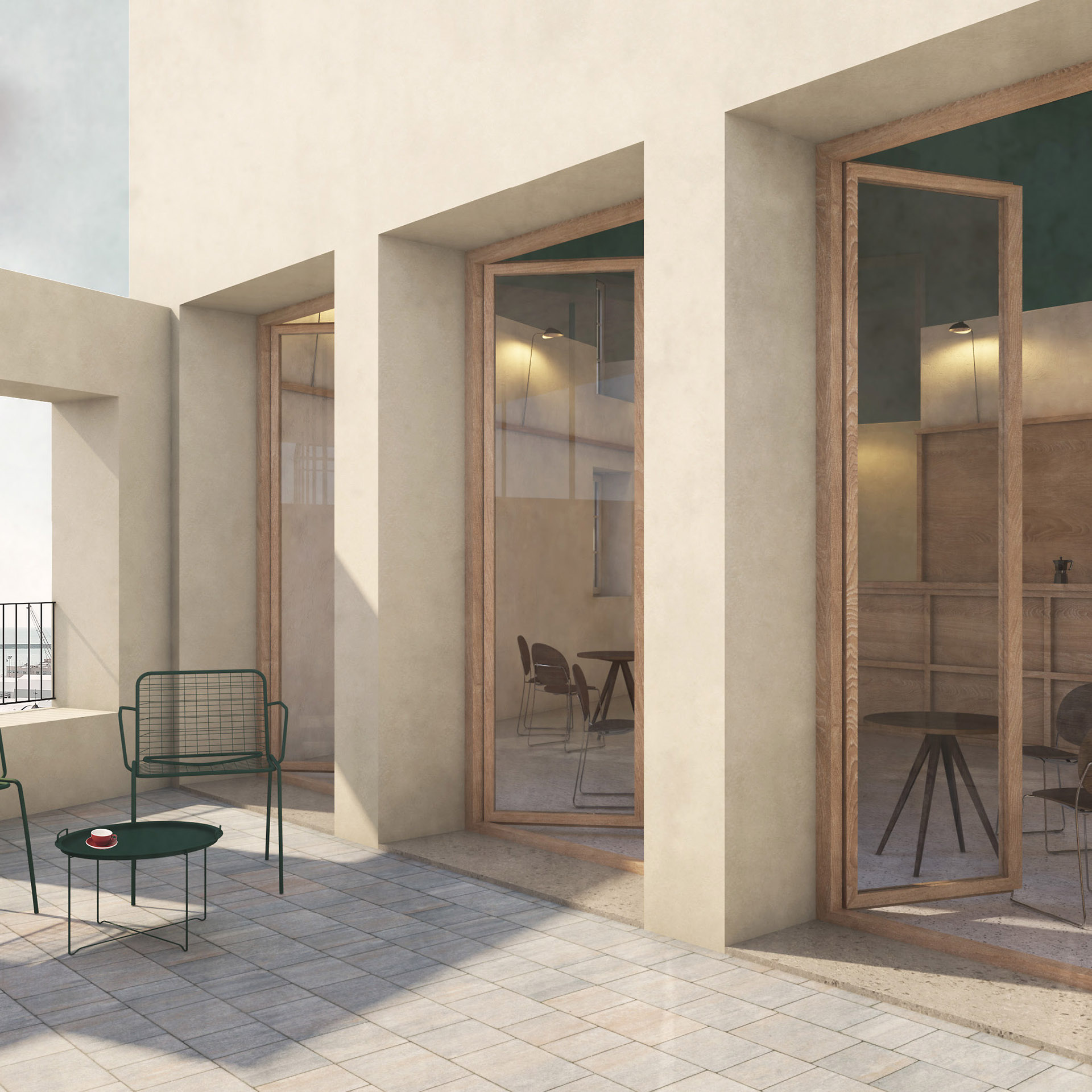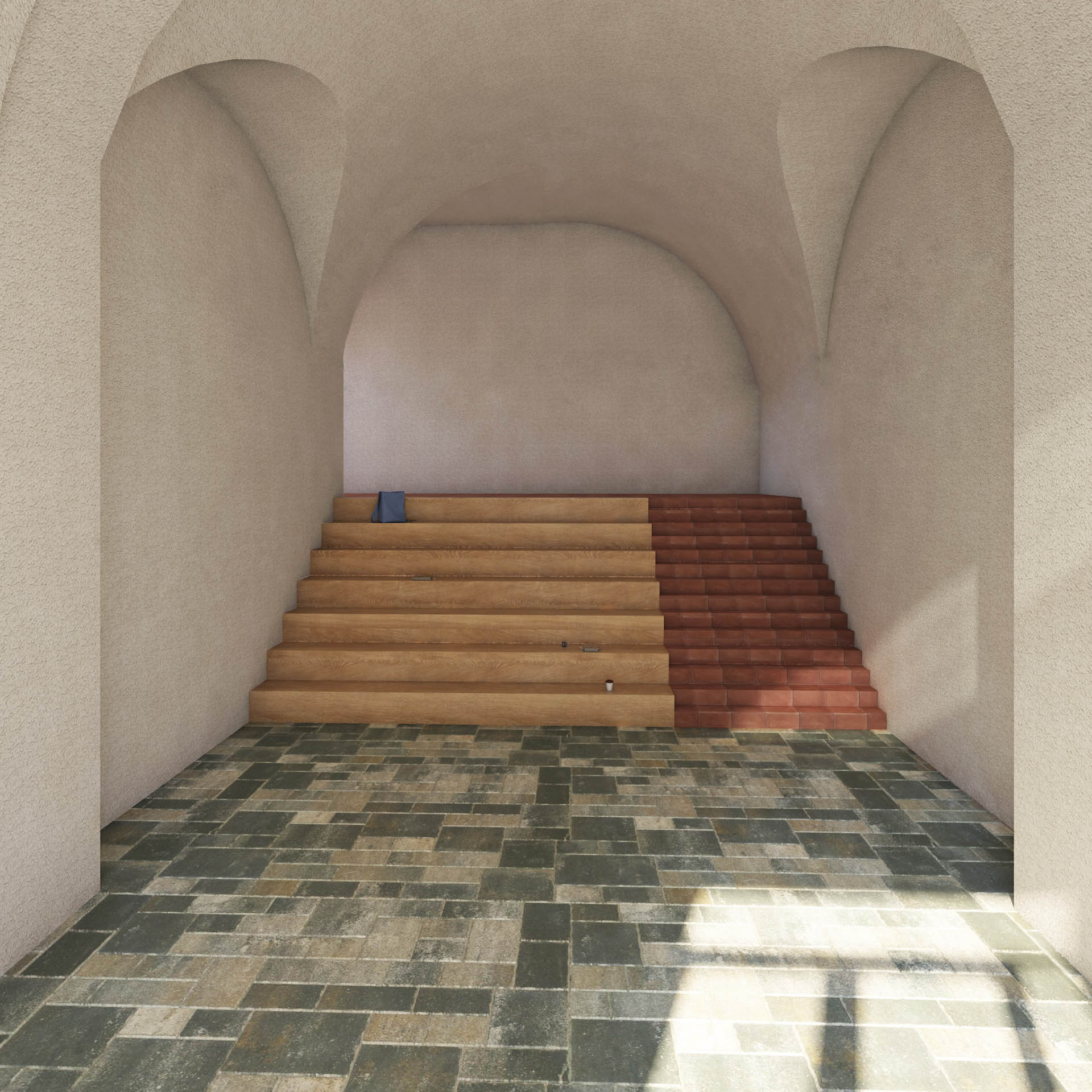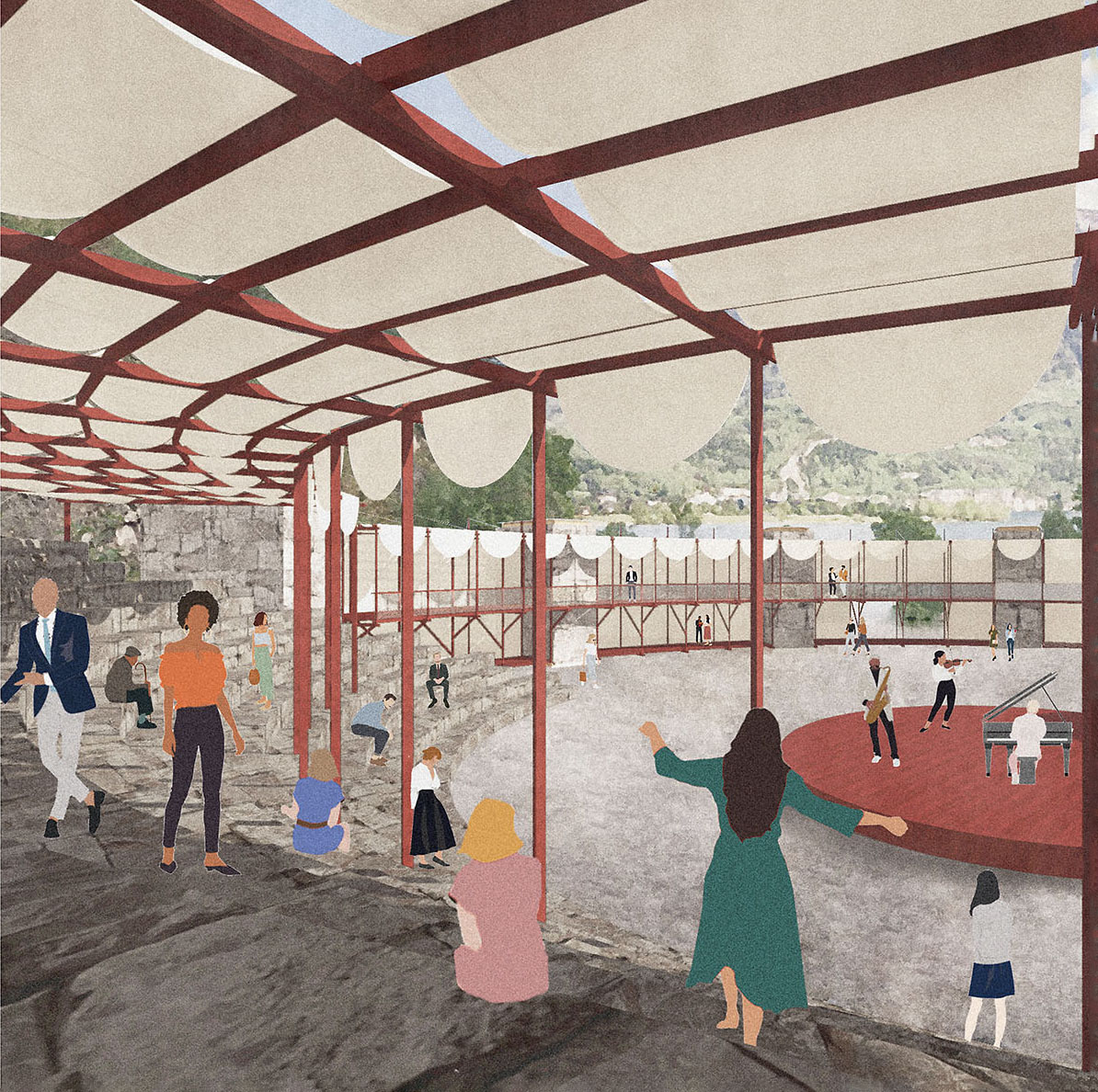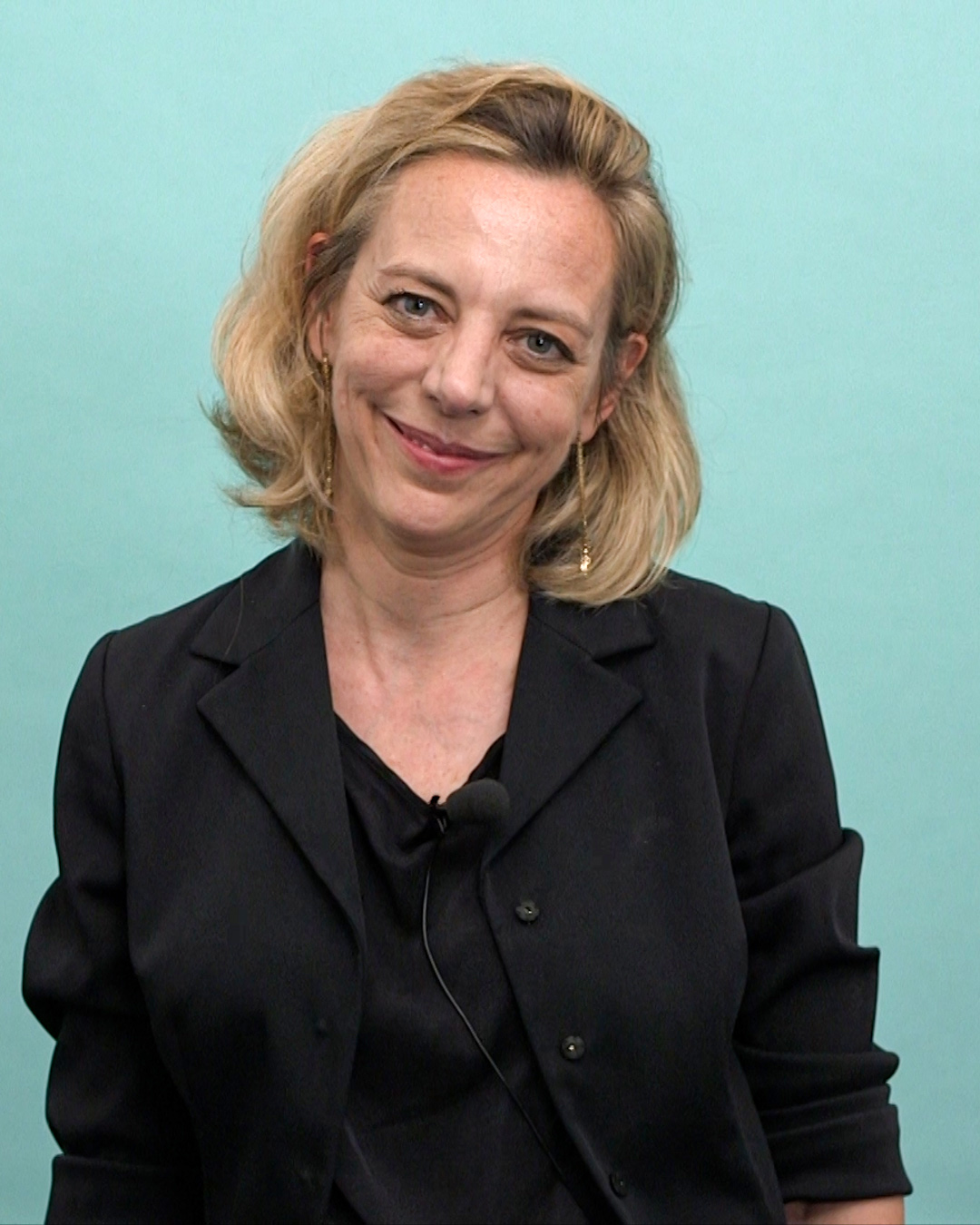The city as palimpsest – extending Collina di Castello, Genoa
«(n) palimpsest (a manuscript (usually written on papyrus or parchment) on which more than one text has been written with the earlier writing incompletely erased and still visible)»
André Corboz describes in his essay «The Land as Palimpsest» (1983) how land, analogous to a palimpsest, is subject to constant processes of change through new layers being superimposed over the old. In the process, natural and man-made events add new layers while also blurring existing ones are or even erasing them altogether. This reading, this phenomenon, which goes far beyond archaeology, can readily be applied to cities. Cities are areas of land that have been most shaped by man. Cities, their landscapes and their buildings have, since their beginnings, been undergoing continual transformation, been built over and superimposed. The richness and density of the substance and history is comparable to the deposits of geological layers. And the older the city, the more complex the structure of material and time, the more interesting the palimpsest.
We are interested in the never-completed city, the city of layers, fractures and shadows, the invisible city. Italo Calvino, who grew up in San Remo Liguria, is the author of «Invisible Cities» ( 1985) wherein he provides a powerful inspiration for architects because, in their openness and fleetingness, invisible cities reveal alternatives for the cities of the future.
The task of Autumn semester 2021 in the Master Studio «Architecture & Structure» was to design a contemporary intervention for the Collina del Castello in Genoa – a new layer, as it were, that augments and overlays the existing urban structure that has evolved over the centuries. This required reading and understanding the palimpsest of the city. The following topics were suggested as a starting point for the discussion of the programme:
- Redesigning public space and its links with the surrounding urban structures.
- An extension of the architecture faculty building
- The creation of a museum for urban structures
The following questions were asked to the students:
- How do you read and interpret the palimpsest of the city?
- What kind of shadow do you wish to generate?
- In what way does your project contribute to enhancing the city?
There was no precise spatial programme provided. The students had to develop it individually on the basis of the analysis and the chosen urban development strategy.
The following project is by master student Rebecca Baer.
